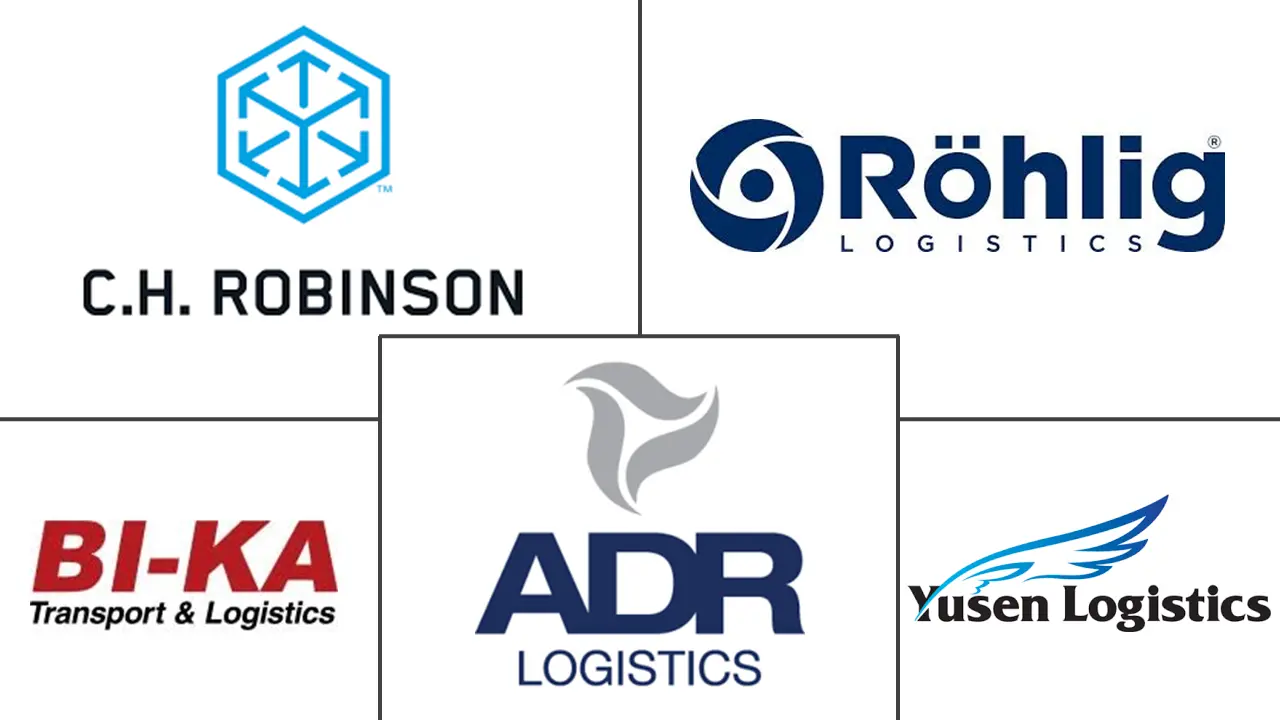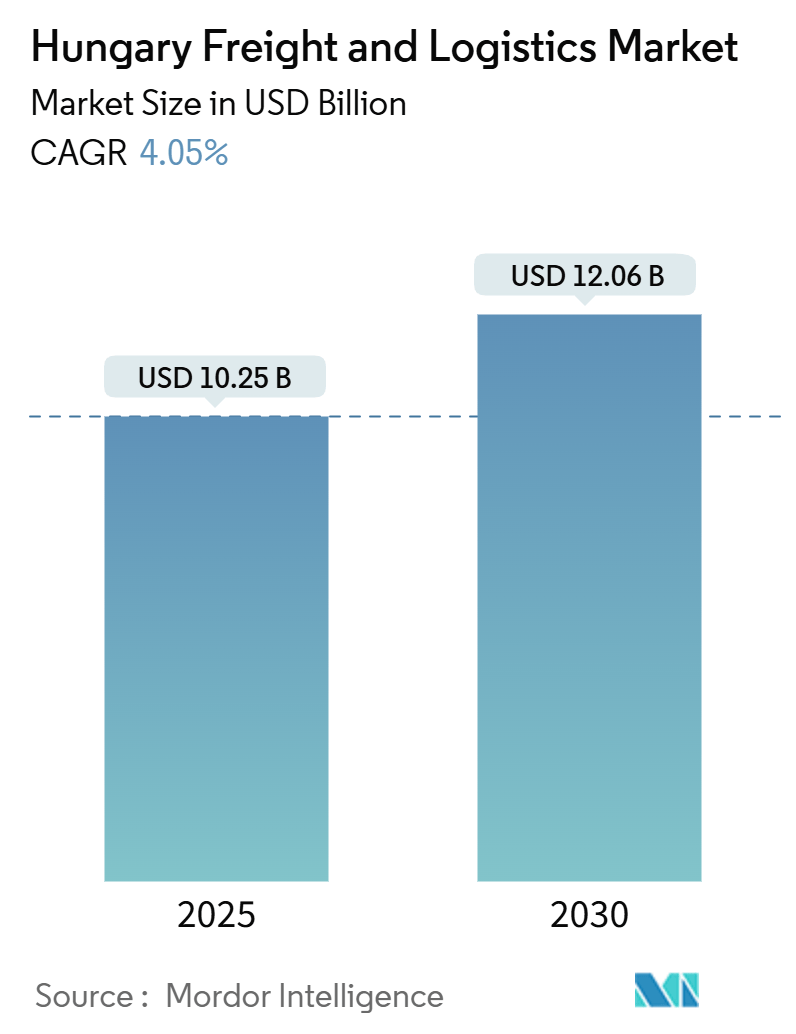
Hungary Freight And Logistics Market Analysis by Mordor Intelligence
The Hungary Freight And Logistics Market size is estimated at USD 10.25 billion in 2025, and is expected to reach USD 12.06 billion by 2030, at a CAGR of 4.05% during the forecast period (2025-2030).
- The net turnover of the logistics service providers in Hungary is around HUF 3,400 billion (USD 9.8 billion), which accounts for nearly 5% of the total net turnover of the national economy. Currently, there are 40,000 logistics companies in Hungary, of which a significant portion are small and medium-sized enterprises. The Hungarian logistics sector employs 259 thousand people, which is around 6.5% of the total employment in the country's labor force. The logistics sector accounts for 6.3% of the Hungarian gross domestic product.
- Due to its geographical position, Hungary occupies a central position in Europe. The country is crossed by four Trans-European Transport Corridors (TEN-T), each reaching the capital. Hungary currently has four fully operational rail freight corridors: Orient-East Med, Mediterranean, Amber, and Rhine-Danube. It is also located at the intersection of two European Rail Traffic Management System (ERTMS) lines.
- Therefore, the country is acting as a ferry linking the European Union with the rest of Europe from the south (Serbia) and the north (Ukraine). This makes Hungary one of the most important transport hubs, providing easy access to all parts of Europe by rail, road, air, and water transport.
- Over the years, the government has made huge investments in all modes of transport (rail, road, air, and water) to develop them to their most efficient level of functioning. Further, in 2024, Hungary's Minister of Construction and Transport unveiled an ambitious ten-year initiative to rejuvenate the country's railway and road systems. With the backing of multi-billion euro investments, the plan targets the modernization of 3,000-3,500 kilometers of railway lines currently facing speed restrictions.
- Additionally, it includes the construction of new motorways and expressways, alongside upgrades to the existing road network. These road enhancements aim to not only boost connectivity and transportation efficiency but also significantly increase state revenue through toll collections. Projections indicate a rise from the current HUF 600 billion (EUR 1.5 billion) to a range of HUF 1,000 to HUF 1,200 billion (EUR 2.5 to EUR 3 billion). Given Hungary's pivotal position on the West-East axis, the government underscores the importance of this investment in solidifying the nation's status as a central transport hub. So, for the next few years, extraordinary developments are expected on the entire Hungarian road and rail network, which drives the freight and logistics industry.
Hungary Freight And Logistics Market Trends and Insights
Rising E-commerce in Hungary: A Catalyst for Logistics Growth
As internet penetration and accessibility increase, more people can benefit from the majority of online services, including e-commerce. The e-commerce sector is expected to break the net, accounting for double-digit growth in locations around the world. As digital payment options become more prevalent in these regions, e-commerce will thrive immensely.
In 2023, Hungary's e-commerce sector generated revenues exceeding USD 2.4 billion, positioning the country as the 57th largest e-commerce market globally. Hungary's domestic online retail turnover saw a 2.2-fold increase in 2024. Despite being one of the region's fastest-growing e-commerce markets, Hungary lags behind the EU average of 63% and regional counterparts like Poland and the Czech Republic. By 2027, the e-commerce user base in Hungary is anticipated to reach 5.8 million. Notably, nearly 40% of e-commerce revenue is accrued in the two months leading up to the holiday season.
Due to its geographical position, Hungary occupies a central position in Europe, acting as a ferry linking the EU with the rest of Europe. U.S. companies wishing to establish a presence in Hungary can take advantage of this by establishing their logistic center in Hungary and supplying Europe from here. For instance, in April 2023, in Budapest, a new logistics and trade exchange center, covering 100,000 square meters, is on the horizon. The project, named Koeman, is being developed by a Chinese company, Tonglinada, which specializes in logistics and supply chain management. The land for this venture has been leased from a Hungarian firm, Nonfungo. Therefore, the rapid expansion of e-commerce represents a major growth opportunity for logistics companies, as it generates increased demand for dedicated services.
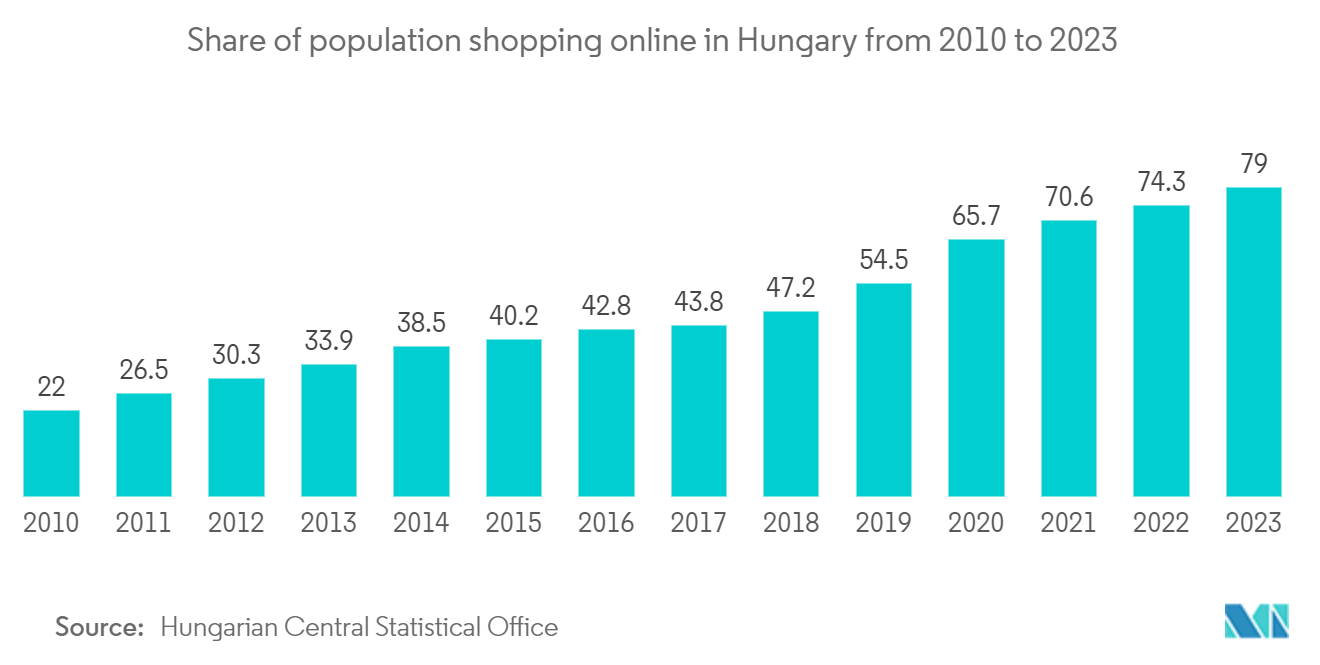
Shift towards Intermodal Freight Transport
The freight industry is one of the most important industries because it plays a significant role in trade and commerce. Moreover, intermodal transport significantly reduces the cost and time spent on deliveries by using a combination of different modes of transport. In Hungary, the most utilized mode of transporting goods is by road. If about 10-20% of long-distance road freight traffic would be shifted to rail and waterway transport, the environmental burden of public roads could be reduced. There are more than 500,000 heavy goods vehicles on the roads of Budapest and within 70 km of the city every year. About 5 to 10% of this traffic could be a potential business partner for rail intermodal freight transport, which would mean the intermodal transport of up to 25,000 to 50,000 heavy goods trailers per year. To facilitate this shift from roads to rail and waterways, many improvements have been initiated by the Hungarian government. The road, rail, and waterway partnerships have been upgraded, allowing carriers to save costs and compensate for the significant driver shortage. Also, new industrial parks, larger warehouses, and logistics centers are being encouraged to build rail links.
Hungary is establishing a logistics base in the port of Trieste, Italy, on an area of 32 hectares. This will allow companies to reach the Hungarian sea exit by road or rail within 24 hours. As part of the National Intermodal Container Terminal Network, the country has also worked on projects to set up intermodal hubs.
The East-West Gate (EWG) terminal is located at a junction between Hungary's 1435-mm and Ukraine's 1520-mm-gauge rail lines, south of the border crossing point of Zahony. The facility can handle up to one million 20-foot containers per year. The terminal will load the trucks and conventional road semi-trailers onto the rail as well as provide trans-shipment of wagons between the two gauges. Moreover, the Hungarian government has committed 12.4 billion forints (USD 0.035 Billion) to improve rail infrastructure around EWG as well as the Zahony Wide station.
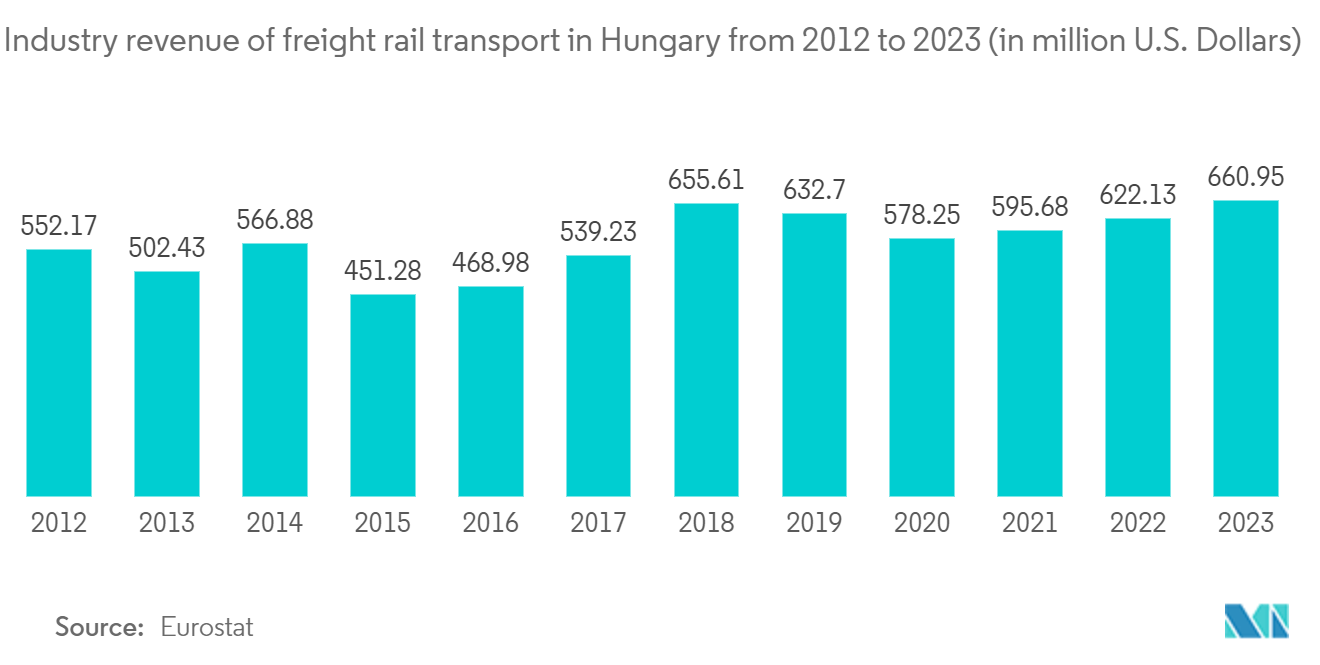
Competitive Landscape
The market is highly fragmented in nature, with large companies claiming significant market share. The Hungarian logistics industry is undergoing significant developments in the fields of both indoor and transport logistics, thus creating new market opportunities for existing players in the market. The initiatives taken by the government to develop the logistics market in Hungary are further motivating new players to enter the market. Some of the existing major players in the market include C.H Robinson, Rohlig Logistics, Yusen Logistics, ADR Logistics Ltd, BI-KA Logisztika Kft etc.
Hungary Freight And Logistics Industry Leaders
-
C.H Robinson
-
Rohlig Logistics
-
Yusen Logistics
-
ADR Logistics Ltd
-
BI-KA Logisztika Kft
- *Disclaimer: Major Players sorted in no particular order
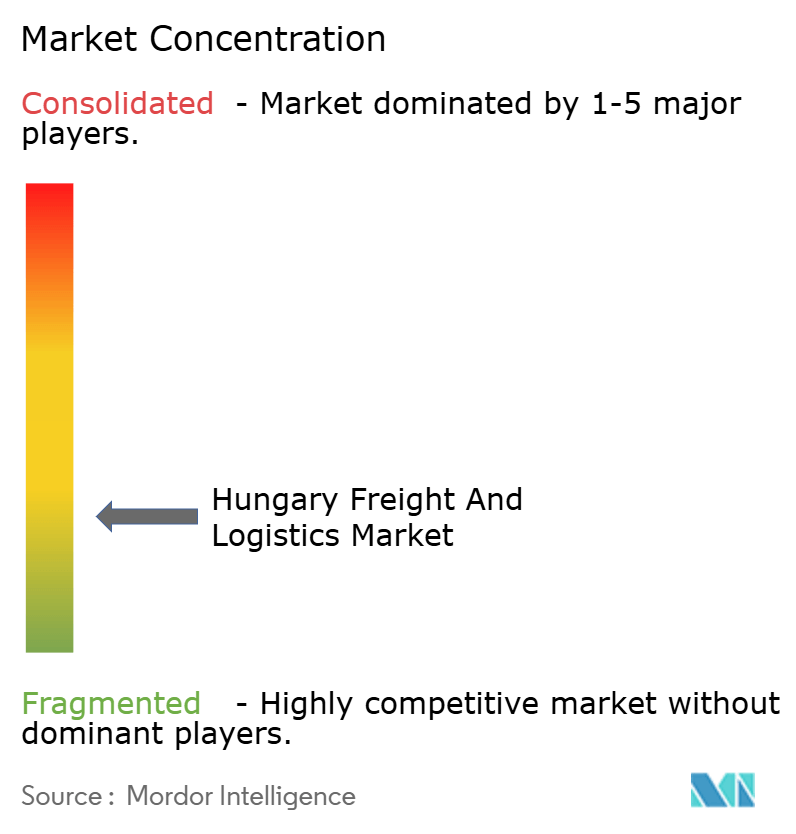
Recent Industry Developments
- July 2024: GLS Group, a prominent package logistics provider in Europe and North America, has bolstered its e-commerce capabilities by acquiring iLogistic, a Hungarian firm renowned for its comprehensive fulfilment services.
- February 2024: Waberer announced its plans to establish a 20,000-sqm logistics centre in eastern Hungary, targeting the region's burgeoning automotive supply chain. Following the acquisition of a 57,000-sqm plot in Debrecen's industrial park, situated near the Romanian border, the company outlined its vision. Aligned with its 2027 strategy, the new centre underscores Waberer's commitment to modernizing its warehouse complexes nationwide.
Hungary Freight And Logistics Market Report Scope
The freight and logistics industry is associated with the movement and transportation of goods, whether by truck, car, rail, ocean liner, or any other form of transportation. Logistics is the management of the flow of things between the point of origin and the point of consumption to meet the requirements of customers or businesses.
The Freight and Logistics Market in Hungary is segmented by Function, by end-user, others. By function the market is segmented by freight transport, freight forwarding, warehousing, value-added services, and other functions and by end-user the market is segmented by manufacturing and automotive, oil and gas, mining and quarrying, agriculture, fishing, and forestry, construction, distributive trade (wholesale and retail segments - FMCG included), others (telecommunications, pharmaceuticals, and healthcare, food and beverage). The report offers market size and forecasts in value (USD) for all the above segments.
| Freight Transport | Road |
| Shipping and Inland Water | |
| Air | |
| Rail | |
| Freight Forwarding | |
| Warehousing | |
| Value-added Services and Other Functions |
| Manufacturing and Automotive |
| Oil and Gas |
| Mining and Quarrying |
| Agriculture, Fishing, and Forestry |
| Construction |
| Distributive Trade (Wholesale and Retail Segments - FMCG included) |
| Other End Users (Telecommunications, Food and Beverage, and Pharmaceuticals) |
| By Function | Freight Transport | Road |
| Shipping and Inland Water | ||
| Air | ||
| Rail | ||
| Freight Forwarding | ||
| Warehousing | ||
| Value-added Services and Other Functions | ||
| By End User | Manufacturing and Automotive | |
| Oil and Gas | ||
| Mining and Quarrying | ||
| Agriculture, Fishing, and Forestry | ||
| Construction | ||
| Distributive Trade (Wholesale and Retail Segments - FMCG included) | ||
| Other End Users (Telecommunications, Food and Beverage, and Pharmaceuticals) |
Key Questions Answered in the Report
How big is the Hungary Freight And Logistics Market?
The Hungary Freight And Logistics Market size is expected to reach USD 10.25 billion in 2025 and grow at a CAGR of 4.05% to reach USD 12.06 billion by 2030.
What is the current Hungary Freight And Logistics Market size?
In 2025, the Hungary Freight And Logistics Market size is expected to reach USD 10.25 billion.
Who are the key players in Hungary Freight And Logistics Market?
C.H Robinson, Rohlig Logistics, Yusen Logistics, ADR Logistics Ltd and BI-KA Logisztika Kft are the major companies operating in the Hungary Freight And Logistics Market.
What years does this Hungary Freight And Logistics Market cover, and what was the market size in 2024?
In 2024, the Hungary Freight And Logistics Market size was estimated at USD 9.83 billion. The report covers the Hungary Freight And Logistics Market historical market size for years: 2019, 2020, 2021, 2022, 2023 and 2024. The report also forecasts the Hungary Freight And Logistics Market size for years: 2025, 2026, 2027, 2028, 2029 and 2030.
Page last updated on:
Hungary Freight And Logistics Market Report
Statistics for the 2025 Hungary Freight And Logistics market share, size and revenue growth rate, created by Mordor Intelligence™ Industry Reports. Hungary Freight And Logistics analysis includes a market forecast outlook for 2025 to 2030 and historical overview. Get a sample of this industry analysis as a free report PDF download.
